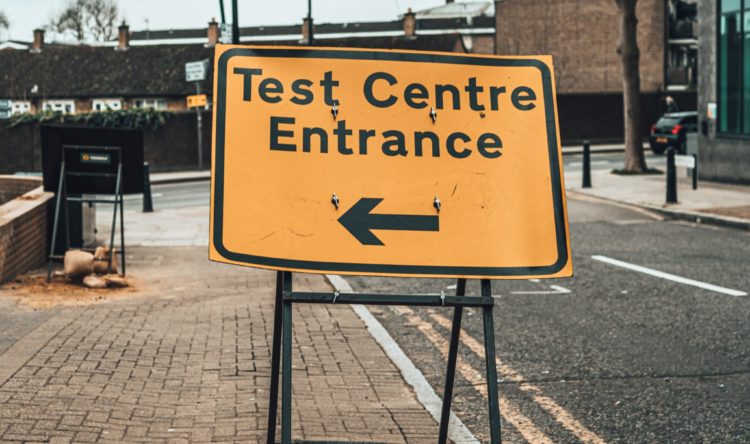Is this the future?
AI imagines the future of our road systems
AI imagines what future roads could look like. It’s bad news if we don’t follow climate recommendations and, even then, it doesn’t look too bright.
The following are the results of a project by CarMats.co.uk utilising the latest technology vision.
Credit: Evoluted
New scenes
Across Europe, the road landscapes are changing.
Recent government and local government-backed initiatives such as ULEZ zones and EV chargers, are aiming to reshape our roads.
Using the emerging power of AI, CarMats.co.uk has projected what roads in 2050 could look like. Based on global climate actions and implied evolution of transport and energy use, the predictions envisage some radical changes.
So what exactly could we expect to see?
The team researched climate initiatives that have already been rolled out on roads across the globe. Furthermore, they explored the National Highways‘ climate preparation methods. These initiatives were then inputted into DALL-E using descriptive prompts.
Utilising AI, they have visualised several ways in which UK motorways could change in the face of a rapidly changing climate.
The AI-generated images depict electric car stations, wildlife overpasses, green corridors, solar-powered rest areas and an influx of wind energy farms.
1. Electric Car Stations
In October 2023, ZapMap reported that 15.6% of new car registrations were electric, contributing to a total of 920,000 electric cars on UK roads. Despite this, electric cars make up only 2.7% of the estimated 33.48 million licensed cars in June 2023.
Anticipating the 2035 ban on new petrol, diesel and hybrid cars, CarMats.co.uk turned to AI to project a 34% electric car presence on roads by 2050. The predicted surge would mean motorways would have to adjust to accommodate the influx of chargeable vehicles, illustrated in this AI-generated image showcasing electric car stations.
2. Wildlife Overpasses
Countries such as the Netherlands, Switzerland, Germany, and France have incorporated nationwide overpasses and underpasses to safeguard their homegrown agriculture, such as amphibians, badgers, insects, and other small mammals.
Highways England states that 70m animals die each year on our roads. By 2050, this would amount to 1.82 billion animal deaths from now. On account of this, introducing wildlife-friendly road infrastructure could keep animals safe from transport.
In the AI image, the overpasses stretch over a traditional busy UK motorway, this depiction could be a vision of how our roads could look in the future if the Government prioritises animal welfare and green initiatives.
3. Green Corridors
Like wildlife crossings, the integration of green barriers (natural vegetation barriers along roadsides) could not only help save and provide habitats for the UK’s local wildlife but also enhance air quality.
Revealed during a conference, Biology researcher Rob Ament from the Western Transportation Institution shared findings indicating that the landscapes bordering federal roadways capture emissions equivalent to approximately 7.6 million cars and could be managed to absorb the emissions of millions more.
One country that has keenly adopted green corridor initiatives, is Morocco. In 2016, Morocco’s Highway Authority planted more than 3 million trees in the country over a period of a decade. AI has imagined what our motorways could look like if the UK followed suit.
4. CO2 Absorbing Plants
It’s not just trees that help absorb harmful emissions, as certain plants are recognised for their CO2-absorbing abilities too.
As a result, strategically planting CO2-absorbing plants along motorways could contribute to carbon sequestration, reducing the impact of emissions.
According to the Royal Horticultural Society, the Cotoneaster Franchetii is the best shrub for cleaning air polluted by car exhausts. Other Google-recommended CO2-absorbing plants include the Transvaal Daisies, which have been depicted in the AI image of a climate-friendly road in 2050.
5. Solar-Powered Rest Areas
While not yet a widespread environmentally conscious effort, solar-powered rest areas might become commonplace by 2050.
In Abu Dhabi, the Joint Committee for Traffic Safety joined forces with the city’s primary food delivery platform to launch solar-powered rest areasspecifically designed for delivery riders. This partnership seeks to establish convenient stations where delivery personnel can recharge and rehydrate during the hot summer season.
In the AI-generated idealistic depiction of UK roads in 2050, solar-powered rest stations might dot the highways, offering not only a sustainable energy source but also serving as convenient charging points for electric vehicles.
6. Wind Turbines
Adding more wind energy farms along the roadside is arguably the most straightforward way to go green, and will likely make the biggest difference for the environment. The introduction of wind farms could harness renewable energy to power nearby communities and support the electrification of transport.
In September 2023, the Government relaxed restrictions on planning wind farms.This means there are fewer steps and potential barriers when deciding to build one. On this basis, AI has interpreted a future UK motorway network.
How UK motorways could look if we don’t follow green initiatives
If the UK neglects the adoption of green initiatives such as wind energy farms, animal road crossings, and the widespread use of electric cars, our roads could undergo a concerning transformation. Infinity Renewables estimates that if we continue usage at our current rate, all of our fossil fuels will be depleted by 2060.
The absence of dedicated animal road crossings might contribute to an alarming increase in wildlife fatalities, disrupting the ecological balance. The deaths of 70 million animals on the roads each year would equate to 1.82 billion animal deaths by 2050.
It’s not just local wildlife that would be affected though, the repercussions would extend beyond the roadsides, impacting plants, trees, and the overall countryside. According to the WDF, forest loss and damage are the cause of around 10% of global warming. The failure to embrace cleaner technologies and green initiatives could result in a dystopian-looking landscape, with depleted ecosystems, compromised biodiversity and a dangerous atmosphere.




